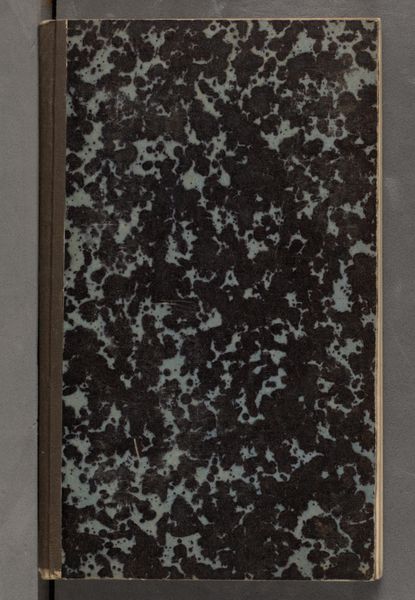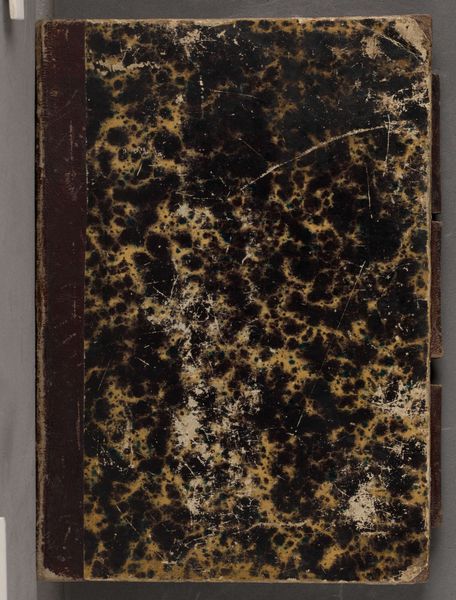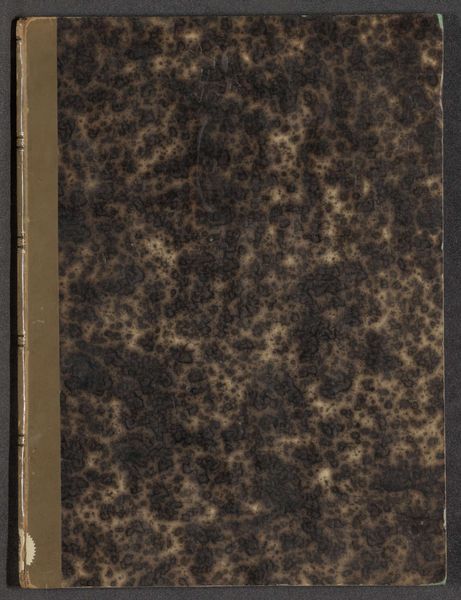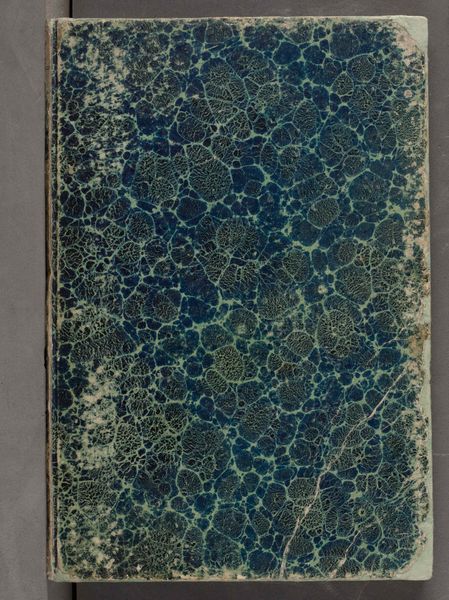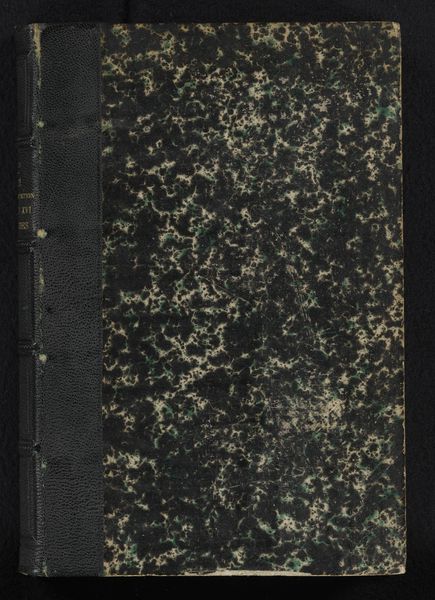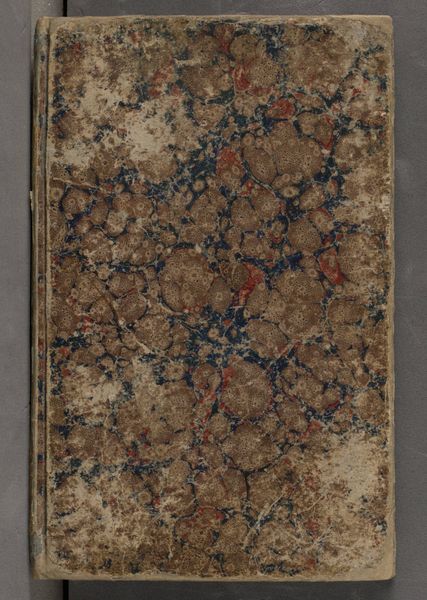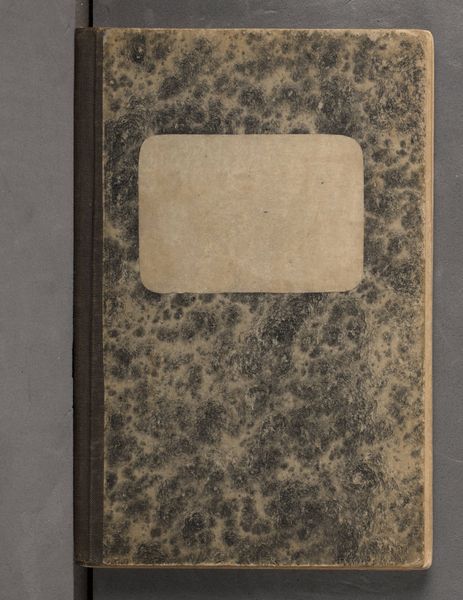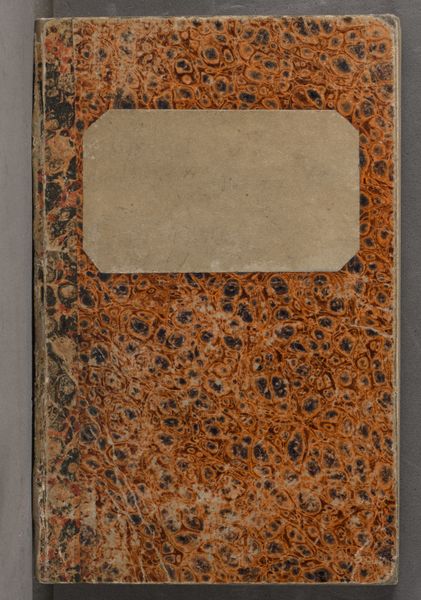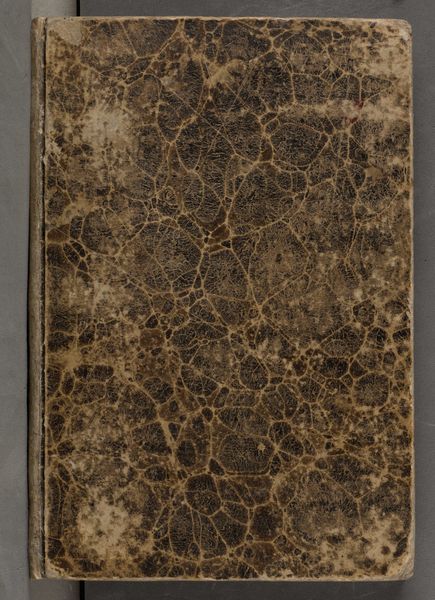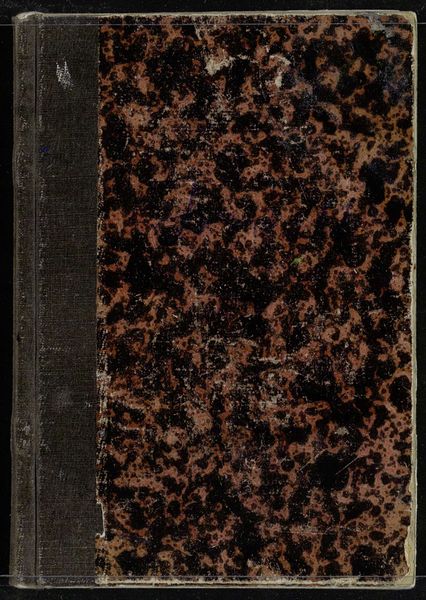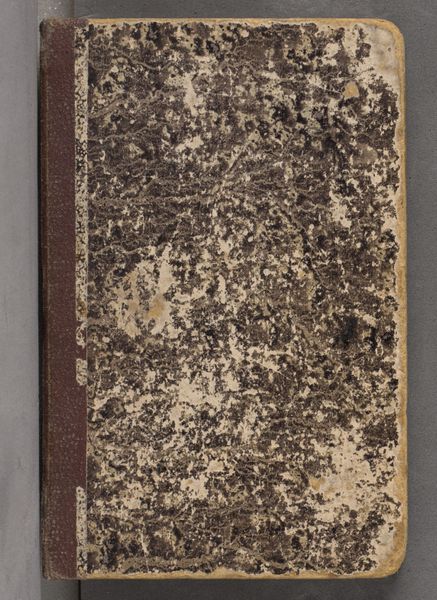
Copyright: Public Domain
This is Ludwig Metz's "Skizzenbuch," housed here at the Städel Museum. Its dominant visual experience is defined by its materiality. The cover, a mottled expanse of browns and tans punctuated by small green spots, presents a compelling texture. The eye is drawn to the interplay of these colors, which seem to simulate the effects of time and wear on the surface. The composition divides into two distinct fields: the textured cover, evoking a sense of organic decay and the smooth, dark green spine, which provides a stark contrast. This juxtaposition invites a semiotic reading. The worn cover might symbolize the accumulation of knowledge and experience contained within, while the spine, with its solid color, suggests a kind of structural integrity. It frames the sketchbook not merely as an object but as a container of thought. The sketchbook challenges traditional notions of artistic value. Its interest lies not in a singular image, but in the potential for artistic creation it holds within its blank pages. This potential is underscored by the materiality of the cover which signals a broader cultural fascination with time, decay, and the value of the imperfect.
Comments
stadelmuseum about 2 years ago
⋮
Ludwig Metz brought this sketchbook with him twice: on one of his first study trips to Italy in 1872, where he visited Spoleto and Civita Castellana, among other places, and then crossed over to Corfu and returned to Orvieto via Brindisi. The sketches of the ruins of Münzenberg Castle on pages 10 and 11 have likely been made between this and the next trip to Italy and Corfu. A brief ten years later, in the winter of 1881, Metz returned to Italy, sketched in Gargnano, Sirmione and other places on Lake Garda, then travelled to Urbino, Spoleto, Nottuno and from Brindisi to Corfu again. The drawings from both journeys are largely done with quick strokes, mostly in landscape format, for which Metz rotated the booklet by 90 degrees. With only a few exceptions, he mostly left the opposite page blank. Only towards the end of the sketchbook do the drawings start to be packed more closely together, perhaps due to a lack of space. During both journeys and in pencil, Metz documented mainly landscapes with medieval ruins, which he probably captured standing in nature while holding the sketchbook in one hand, considering their quick realisation and perspective. The curled page texture found in the second half of the book, which is typical for intermittent moistening and drying, suggests that the drawings on these pages were probably moistened by light rain.For a full sketchbook description, please see “Research”.
Join the conversation
Join millions of artists and users on Artera today and experience the ultimate creative platform.

